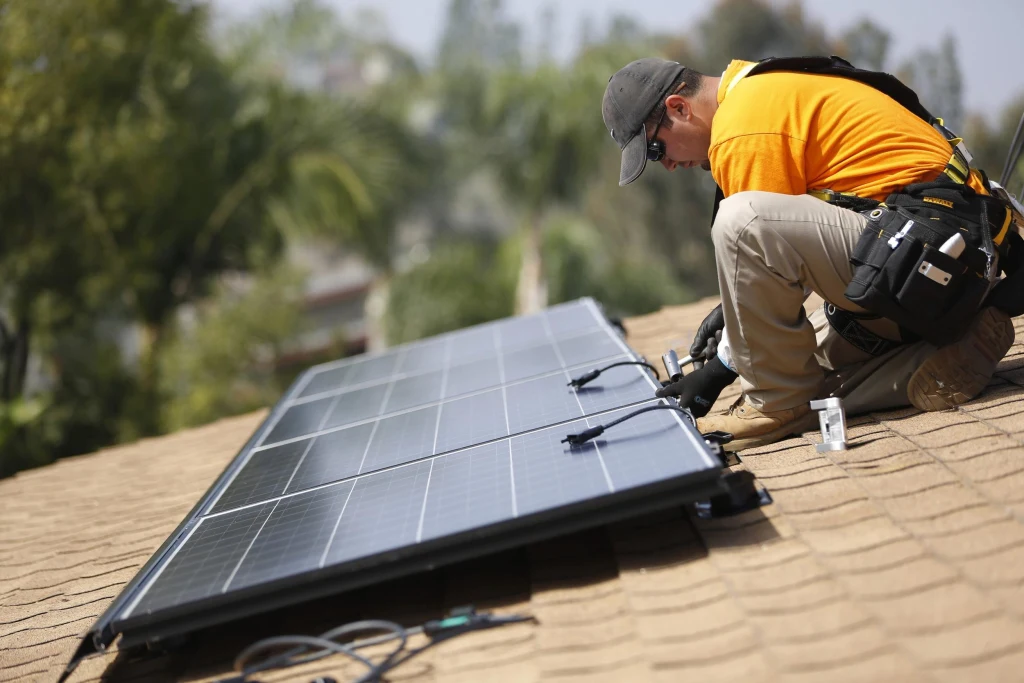As strength costs increase and environmental issues develop, residential solar installation have come to be an attractive alternative for homeowners. Solar panels not only reduce strength payments but also make contributions to a purifier planet. However, installing a sun electricity machine calls for cautious making plans and expertise of the method. In this manual, we can discover the advantages, installation technique, and important suggestions for a successful residential sun setup.
Benefits of Residential Solar Installation
1. Lower Energy Costs
One of the maximum extensive blessings of installing solar panels is the reduction in power bills. Once installed, sun panels generate power, lowering dependence on the grid. Many house owners file savings of 50-90% on their monthly strength payments.
2. Environmental Impact
Solar power is a smooth, renewable aid that enables lessening carbon emissions. Unlike fossil fuels, sun electricity does not produce greenhouse gases, making it an eco-friendly choice for power intake.
3. Increase in Property Value
Homes with solar electricity structures regularly have better property values. Studies display that capability shoppers are willing to pay extra for houses with pre-hooked up solar panels, thinking about the long-time period strength financial savings they offer.
4. Energy Independence
By generating your very own strength, you emerge as less reliant on the electricity grid. This is in particularly beneficial in regions vulnerable to strength outages or excessive energy fees. With a solar battery gadget, house owners can save excess energy for later use.
5. Government Incentives & Tax Credits
Various federal and kingdom incentives make solar installation extra affordable. The U.S. Authorities give tax credits together with the Federal Investment Tax Credit (ITC), which permits owners to deduct a percentage in their solar installation fees from their taxes.
6. Low Maintenance Costs
Solar panels require minimum protection. Regular cleansing and occasional expert inspections are typically sufficient to preserve the machine running efficiently. Most producers offer warranties of 20-25 years, making sure of lengthy-time period benefits.
Process of Residential Solar Installation
1. Initial Assessment & Planning
The first step in solar installation is assessing your home’s energy needs and comparing its sun ability. Consider the following factors:
- Roof circumstance and orientation
- Amount of sunlight obtained every day
- Local policies and permits
- Energy intake conduct
2. Choosing the Right Solar System
Homeowners must determine among exclusive kinds of sun panel structures:
- Grid-Tied Systems: Connected to the nearby strength grid, permitting house owners to apply power from the grid when solar manufacturing is low.
- Off-Grid Systems: Completely independent of the grid, requiring battery storage to ensure strength availability.
- Hybrid Systems: A mixture of grid-tied and stale-grid, the use of batteries for backup at the same time as nevertheless being connected to the grid.
3. Selecting a Solar Installer
Choosing a reputable solar installer is critical. Look for:
- Certified and certified specialists
- Positive purchaser opinions
- Warranty and service agreements
- Transparent pricing and financing alternatives
4. Site Inspection & System Design
After selecting an installer, a website inspection is carried out to design a customized machine for your home. This consists of:
- Evaluating roof area and structural integrity
- Determining the first-class panel placement for maximum sunlight publicity
- Selecting the perfect inverter and battery storage (if relevant)
5. Permitting & Approval
Before installation starts, the permits must be received from the local government. The technique might also take a few weeks and typically includes:
- Electrical allows
- Building allows
- Utility organization approvals (for grid-tied structures)
6. Solar Panel Installation
Once lets in are accepted, the real setup takes region. The system consists of:
- Mounting solar panels on the roof or floor
- Installing the inverter, which converts sun energy into usable power
- Connecting the system to the home’s electrical panel and grid (if applicable)
7. Inspection & Activation
After set up, a very last inspection is performed by using local authorities or the utility organisation. Once authorised, the system is activated, and owners can start generating their very own strength.
Tips for a Successful Residential Solar Installation
1. Understand Your Energy Needs
Before putting in solar panels, analyze your family’s power intake. This will assist in deciding the right machine size to meet your strength demands.
2. Choose High-Quality Panels & Components
Investing in extraordinary sun panels, inverters, and batteries ensures lengthy-term overall performance. Look for merchandise with sturdy warranties and high strength conversion fees.
3. Explore Financing Options
Solar installation can be luxurious, but numerous financing alternatives are available:
- Solar Loans Allow homeowners to purchase a system with monthly bills.
- Solar Leases: A 1/3 party owns the gadget, and owners pay a fixed month-to-month rate.
- Power Purchase Agreements (PPAs): Homeowners buy electricity generated by means of the sun device at a predetermined price.
4. Take Advantage of Incentives
Research federal, state, and neighborhood incentives that could assist in reducing installation costs. The Federal ITC currently gives a widespread tax credit score for solar gadget installations.
5. Maintain Your Solar Panels
Regular cleaning and renovation can decorate sun panel efficiency. Remove dust, leaves, and particles that may block daylight. Scheduling expert inspections ensures long-time performance.
6. Monitor Energy Production
Use tracking structures to monitor your solar panels’ performance. Many sun agencies provide cellular apps or online dashboards to assist owners in screening energy generation and intake.
7. Consider Battery Storage
Adding a battery machine lets in homeowners to save extra strength for use in the course of nighttime or power outages. This will increase electricity independence and complement gadget reliability.
Conclusion
Residential solar installation is a clever investment that gives monetary financial savings, energy independence, and environmental blessings. By expertise the set up technique and following important guidelines, house owners can maximize their sun power system’s efficiency. Whether you’re seeking to lower your electricity bills or lessen your carbon footprint, sun power is a reliable and sustainable energy solution for the future.

